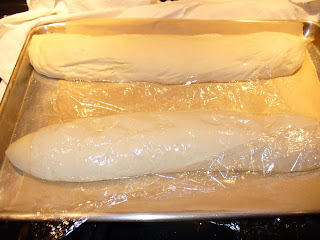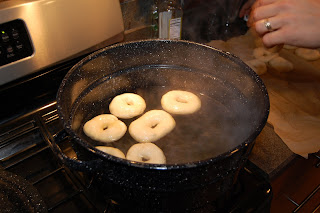 I know that I’ve been missing in action for a couple of weeks now, and the truth is this time of year makes me awfully lazy. Lazy to the point that I get bored and decide to have my wisdom teeth extracted. When I mean extracted, I mean they cut and grind and yank them out. Ah, well, I don’t need to bore you with all of the gory details, but I will say that I haven’t been able to eat properly for about a week. It had severely curtailed my bread baking and enjoying ability. I still feel that every carbohydrate that I eat gets stuck in the other world that used to occupy where my teeth once stood.
I know that I’ve been missing in action for a couple of weeks now, and the truth is this time of year makes me awfully lazy. Lazy to the point that I get bored and decide to have my wisdom teeth extracted. When I mean extracted, I mean they cut and grind and yank them out. Ah, well, I don’t need to bore you with all of the gory details, but I will say that I haven’t been able to eat properly for about a week. It had severely curtailed my bread baking and enjoying ability. I still feel that every carbohydrate that I eat gets stuck in the other world that used to occupy where my teeth once stood.I missed out on eating anything Focaccia, so I’m going to be making that one again for everyone. Oh, what did you say? I didn’t bring that one to work? Oh, quite right, quite right. I gave that one to my wife to take as I was horizontal with packs of ice massaging my cheeks. Plus I can’t find the pictures.
I moved on to a tried and true recipe for me, the French Bread. My favorite of favorite breads. And it’s not that it’s my favorite because it’s the simplest, but just because of the crust and how “homey” the bread, with some good fresh butter, can make you feel. It’s this time of year that this bread will accompany, so nicely any home style soup, chili or loafed meat recipe that you can dream up.
There’s nothing to this recipe, it’s just flour, water, salt and yeast. That’s it, nothing else. The recipe out of the book called for equal parts of bread and all-purpose flour, and I suspect this has something to do with the gluten content, but I’ve made this recipe before just using all bread flour and it turned out great. The one element that might make this better tasting is the introduction of the pate fermente, or a pre-ferment. Just taking part of the dough and letting it sit in the fridge overnight to develop flavor. I am not sure this really raises the flavor of the bread, but then again, perhaps in this case, my pallet isn’t as refined as I really care it to be, and I just want to enjoy a good piece of bread.













































